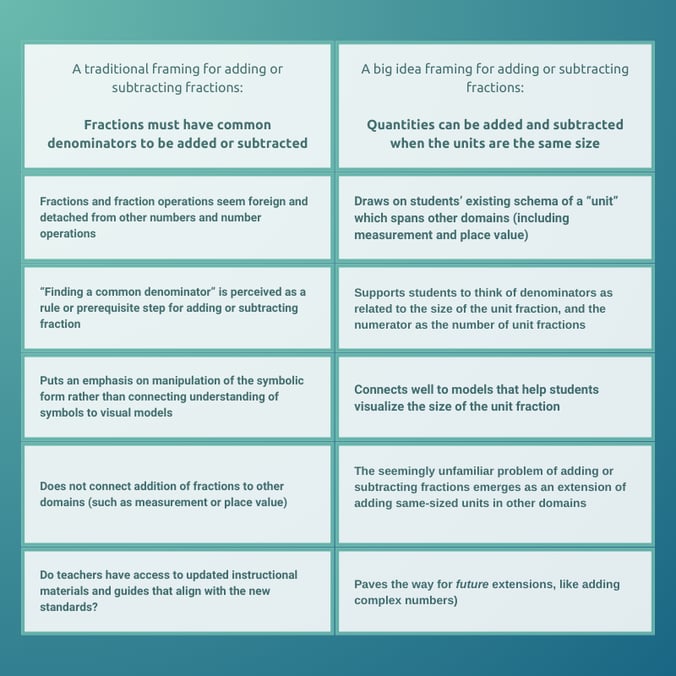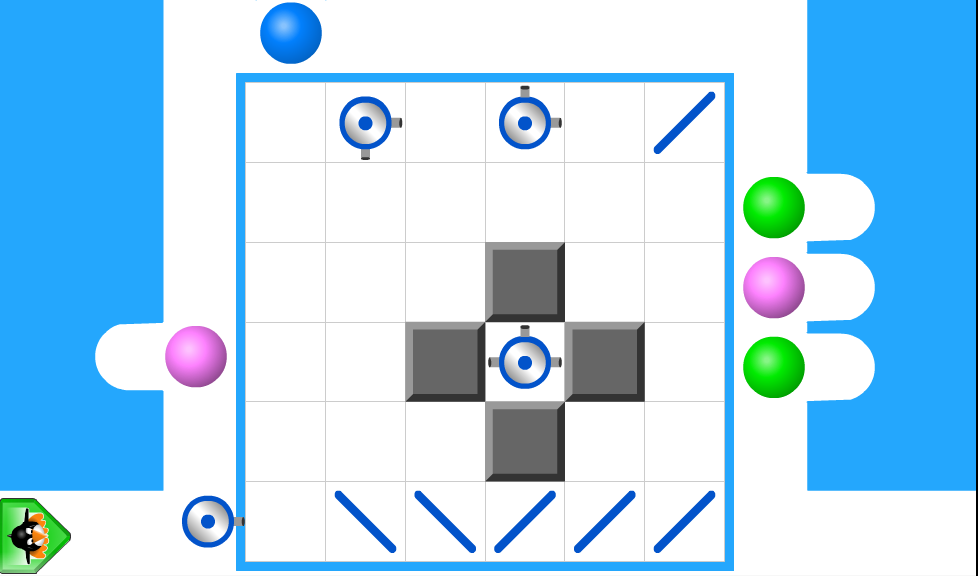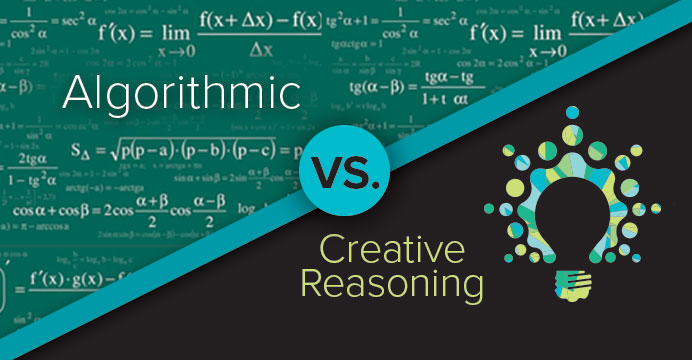Those of us who have spent time in math classrooms or helping our kids with homework around the dining room table tend to have plenty of anecdotal fuel for our passion to change the way we approach math education. Traditional curricula have focused on one particular strand of mathematics (or one domain within the Common Core) at a time. Standards are treated as a checklist to be addressed one at a time. As a result, many students view mathematics as a long list of rules and methods to remember, and students who see mathematics this way are the lowest achieving students (Boaler & Zoido, 2016).

In recent decades, the concept of “big ideas” has come to the forefront in math education, among other disciplines. Randall I. Charles (2005, p. 10) defined a big idea as, “… a statement of an idea that is central to the learning of mathematics, one that links numerous mathematical understandings into a coherent whole.” Though there is much debate as to what constitutes a big enough idea, and how many big ideas there might be, we can generally agree that there are a finite few really big ideas in mathematics.
Proponents of a big ideas approach suggest that a curriculum centered around big ideas helps learners to make connections and transfer knowledge to related but unfamiliar situations. Rather than presenting math as a long list of disconnected topics and concepts, a big ideas approach boils mathematics down to fundamental understandings that each underpin numerous mathematical understandings.
References to big ideas in math education resources are now bountiful. The newly adopted California framework and Georgia’s standards both emphasize big ideas. However, a recent review (Nurnberger-Haag et al., 2024) found that resources referencing big ideas in mathematics are exclusively aimed at improving teachers’ mathematical content knowledge. Teachers are the audience, not students. The review found no student-facing resources that referenced big ideas, nor notes for the teachers in curricular materials about how to focus their students’ thinking around big ideas.
How might we help students build robust schemas around the biggest ideas in mathematics? What might it look like to have student thinking and discourse rooted in mathematical big ideas?
At MIND, we’re on a journey exploring those questions. For nearly three decades, we’ve designed and redesigned ST Math games informed by the neuroscience of how students learn to help students build strong mathematical schemas. And now, we’re developing a core curriculum that springs from the spatial-temporal reasoning of ST Math and centers big ideas, because we believe all students will be equipped to solve the world’s most challenging problems when they understand mathematics to be a network of connected ideas.
How are we doing that? Here are some ways:
Big Ideas are Driving Design
For every grade level course, we intentionally seek to integrate standards from a variety of domains and clusters into each unit. Working on multiples? We’re including scaled bar graphs. Learning about angles? We’re having students revisit the clock face, see elapsed time represented as an angle, and compare that to timeline models. Arrays? We’ve got data visualizations to explore there too!
A Big Idea is the Central Focus of Each Unit
Each unit design begins with a big idea, followed by a few essential understandings that build to the big idea, and the rest flows from there. At all points in the design process, we consider whether the mathematical understandings, lesson objectives, lesson activities, student reflection, and assessments contribute toward a focus on the big idea and coherence within and across grade levels.
We Support Teachers to Support Students
Our teacher materials help teachers to understand the big idea. We provide teachers with just-in-time support with suggested discourse questions that prompt students to make connections and extend their existing schema to problems that, on the surface, might seem unrelated. (This excellent NCTM article demonstrates ways to focus student thinking and discourse on a big idea. Mack, 2004).
Here’s a tiny glimpse into how a shift to a big ideas approach can influence students’ understanding of fraction operations:

We’re convinced that our core curriculum focused on big ideas will help us have an even greater impact on student learning, and we can’t wait to see it in action.
Transform your elementary math curriculum with InsightMath. Be at the forefront of educational innovation by getting exclusive early access to select field testing for the 2024-2025 school year. Don’t miss the chance to revolutionize how math is taught and learned in your classrooms.



